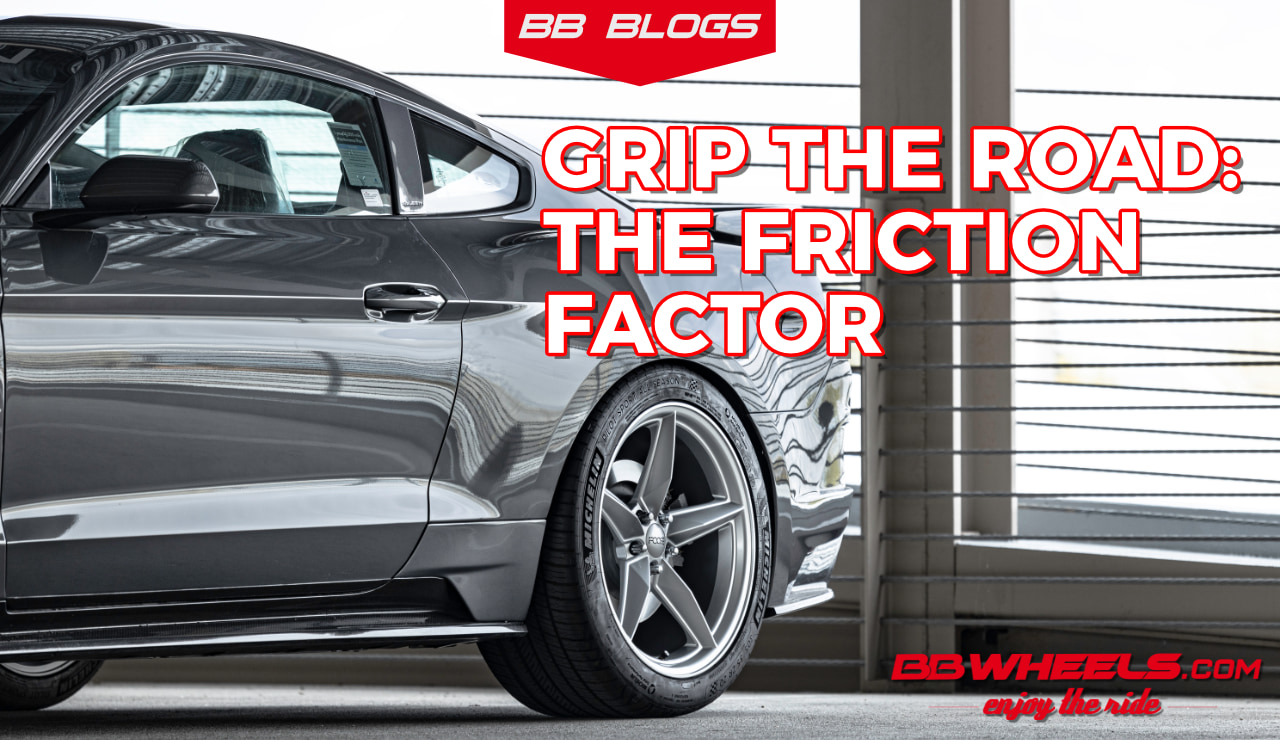When Rubber Meets the Road: The Science of Tire Friction and Heat for a Safer Drive
Posted by BB Wheels on 7th Nov 2023

When Rubber Meets the Road: The Science of Tire Friction and Heat for a Safer Drive
Imagine you're driving; as you turn a corner or brake, you rely on your tires to keep you firmly on the road. That dependable grip is the result of tire friction, an essential force that ensures your vehicle's stability and responsiveness.
Friction is the resistance that occurs when two surfaces move across each other. In the automotive world, it's the hero that enables your tires to grip the road, allowing you to accelerate, turn, and stop securely. The strength of this grip is influenced by two types of friction:
- Static Friction: This keeps your car from sliding when you start moving or when you're navigating curves. It's the strongest type of friction between your tires and the road and what allows your car to accelerate and maneuver effectively without losing grip.
- Kinetic (or Sliding) Friction: This type of friction takes over when tires lose grip and begin to slide. It's weaker than static friction, which is why controlling a car becomes challenging once it starts skidding.
The texture of both the tire and the road surface impacts friction. Smooth tires or roads (like those that are worn or wet) result in less friction and more challenging driving conditions.
Heat: A Byproduct with Benefits and Risks
As you drive, the friction between your tires and the road generates heat. While a certain amount of heat can improve tire performance by softening the rubber and enhancing grip, too much heat can be detrimental, leading to increased wear and the risk of blowouts.
Here's how you can use this knowledge to your advantage:
- Seasonal Adjustments: In winter, the cold can make roads slippery, reducing your tire's ability to grip. Winter tires are crafted to stay soft and retain better friction in cold temperatures, providing safer driving conditions.
- Tire Choice: The rubber compounds and tread patterns of your tires should be chosen based on the typical weather conditions you drive in. Tires are specifically designed to optimize friction for different scenarios, ensuring the best possible performance.
- Tire Pressure: Proper inflation is key. It ensures that the right amount of tire surface meets the road, increasing friction and improving grip. This not only enhances safety but also boosts fuel efficiency.
- Understanding Overheating: On extended trips at high speeds, tires can overheat. To prevent the risks associated with this, take breaks to allow your tires to cool down, which can also prolong their lifespan.
- Smooth Driving: Aggressive driving increases friction and generates more heat, leading to quicker tire wear. Adopting a smoother driving style will keep you safer and extend the life of your tires.
- Emergency Situations: If you find yourself in a skid, don't slam on the brakes. This reduces the friction needed to regain control. Instead, gently steer in the direction you want to go and lightly pump the brakes if your vehicle isn't equipped with ABS.
Final Thoughts: Rolling Towards Safety and Savings
By understanding the physics of tire friction and heat, you're not just a driver — you're a savvy navigator of the roads. This knowledge empowers you to make choices that ensure a smoother, safer drive and could also help you avoid unnecessary costs in tire maintenance. Be proactive: keep your tires in pristine condition, select the ideal type tailored to your driving demands, and stay on top of your tire pressure. Your tires form the vital link between your car and the road's surface; it's crucial to make this connection a priority.
Want to ensure you're making the best decisions for your vehicle's rubber side down? Give us a call at 320-333-2155. Let's talk tires and take the next step towards optimal driving safety and efficiency together. Your journey matters, and so does every point of contact on the road ahead.

